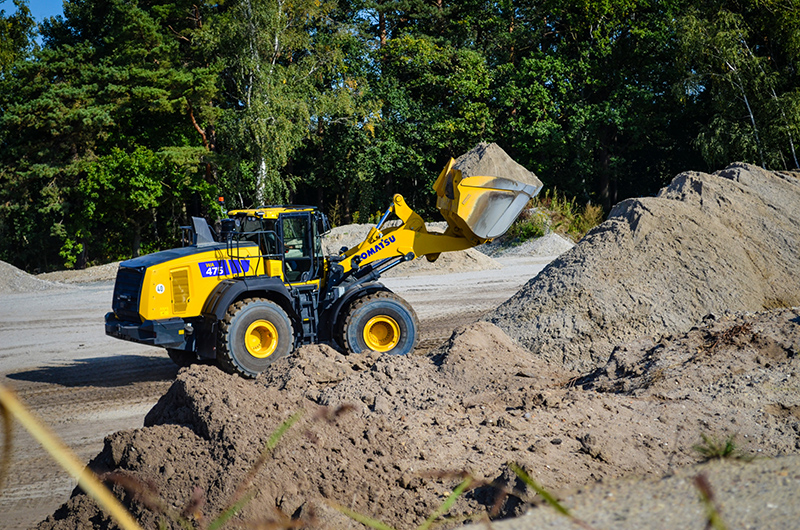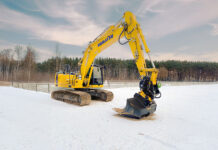
KOMATSU has launched its latest generation of wheel loaders – the WA475-11 and WA485-11.
The models feature a newly developed Komatsu diesel engine, described as boasting ‘extremely high torque in the low speed range’. The engine is combined with a Komatsu-designed hydro-mechanical-transmission (HMT).
The manufacturer explained that the WA475-11 demonstrates a 14% improvement in fuel efficiency over its Dash 10 predecessor, while the WA485-11 achieves a 29% increase in fuel efficiency compared to the WA480-8.
Variable speed control makes it possible to individually adapt the machine’s maximum speed to the requirements of the job site, while the adjustable variable traction control is said to effective limit wheel spin in difficult ground conditions.
Compared to the WA480-8, Komatsu said the WA485-11 has experienced a significant upgrade in payload and bucket capacity. All components have been adapted to a permanent payload of 8,800kg and can be increased to 9,300kg in an aggregate handling variant, which helps to reduce the number of loading cycles required depending on the vehicle size.
A new feature is the variable power control, which enables the lifting speed to be controlled independently of the accelerator pedal. Komatsu revealed the optimised Z-bar linkage offers up to 20% more lifting power and a higher production rate of tons per hour. The hydraulic response time and the tipping or lifting speed can be adjusted to specific application requirements.
The cab offers all-round glazing and has an interior noise level of just 70 dB(A). The heated rear window is angled, which Komatsu said effectively prevents dirt from sticking on the rear screen. The lever console has a new command control switch and is adjustable on a 5-way axis for each operator. The increased internal air pressure is designed to prevent dust and other particles from entering the cab. Both machines are equipped with a rear-hinged door, angled steps, and large handrails.
A digital high-resolution driver information system provides machine measurements, including KDPF status and data on AdBlue levels and fuel consumption. Messages from the ECO control system are displayed in real time during operation and on the exit screen when the ignition is turned off.
Another innovation is the Angle-Feedback-Joystick-Steering (AFJS) without a steering wheel, which gives the driver feedback on the steering angle already achieved at any time via the position of the steering lever. Komatsu said one benefit of this system is the elimination of the steering column, which helps to improve visibility of the work platform and space.
The programmable engine management system automatically switches the engine off when idling or lets the engine run to cool down after leaving the cab and then switches off automatically later.










